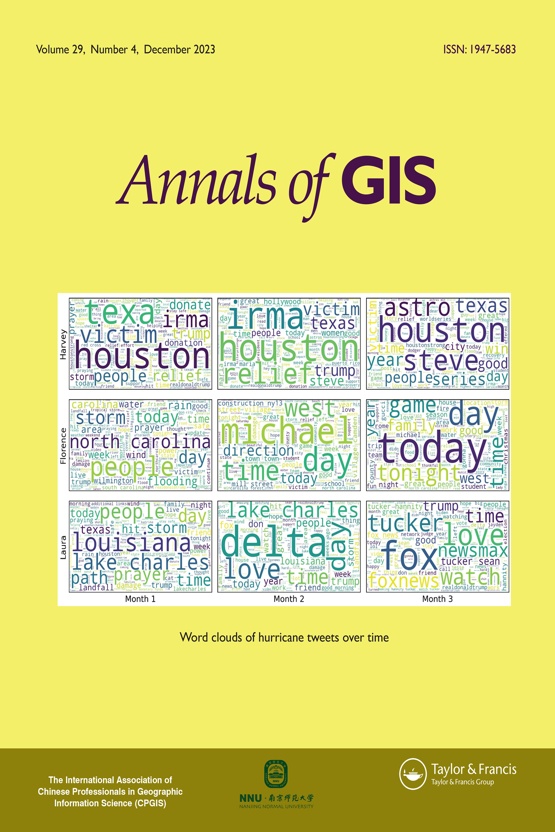Submit a Manuscript to the Journal
Annals of GIS
For a Special Issue on
Spatial statistics and causal inference
Manuscript deadline
30 June 2024

Special Issue Editor(s)
Professor Lin Yang,
School of Geography and Ocean Science, Nanjing University
[email protected]
Associate Professor Bingbo Gao,
College of Land Science and Technology, China Agricultural University
[email protected]
Professor Jinfeng Wang,
Institute of Geographical Sciences and Natural Resources Research, Chinese Academy of Sciences
[email protected]
Spatial statistics and causal inference
Spatial statistics, which utilizes location and distance for population estimation or spatial prediction based on the spatial autocorrelation principle, has been widely applied in GIScience, as well as in human and physical geography. Gradually, spatial heterogeneity was taken into accounts, corresponding indictors and inference method, such as LISA, GWR, geographical detector and Sandwich, were then developed. In the era of big data, the application of spatial statistics has been developed much more deeply. However, samples of large size, as result of the emergence of spatial big data, often causes misuses of spatial statistics. For example, the delusion that samples of large size is the population often leads to a biased estimation. How to correctly apply spatial statistics methods under the big data scenario is challenging. On the other hand, the algorithmic modeling methods from statistical learning bring new opportunities for spatial statistics. Statistical learning has advantages in processing nonlinear relationships and easy to apply but may cause problems of overfitting and over-generalization. Integrating the geographical laws/principles or knowledge into modeling algorithms is another important task in better addressing geographic problems. Besides estimation and prediction, explanation on how factors influence spatial patterns of geographic features/phenomena is also a main concern in geography. Despite the enduring debate on whether spatial statistics can be used for causal inference, many statistical methods have been extensively used to identify causal effects. Meanwhile, many methods for causal inference have been developed, e.g. structural causal modeling originated by Sewall Wright (1889–1988) and developed by Judea Pearl (1936-), and the potential outcome frameworks originated by Ronald Fisher (1890-1962) and Jerzy Neyman (1894-1981) and developed by Donald Rubin (1943-), as well as the prediction-based methods including Granger test, Convergent Cross-Mapping and Geographical Convergent Cross-Mapping method. How we should apply those frameworks to geographical data, with the presence of spatial autocorrelation, spatial heterogeneity, non-normality and non-linearity is also an important research question. This special issue begins a discussion about the above questions. Answers to these questions would not only help to address spatial prediction problems but also advance methods for causal inference in geography.
Topics include, but not limited to, the follows:
- Development of new statistical learning methods, specially for geographical data.
- Application of spatial statistics to spatio-temporal big data.
- Improvement on causal inference methods for geographical problems.
- Applications and examples of causal inference methods in geography/GIScience and related discussion considering the presence of spatial autocorrelation, spatial heterogeneity, non-normality and non-linearity.
- Discussion of the opportunities and challenges of spatial statistics when meeting the statistical learning and causal inference.
Looking to Publish your Research?
Find out how to publish your research open access with Taylor & Francis Group.
Choose open accessSubmission Instructions
The full paper of the selected is expected to be submitted to Annals of GIS via its online submission system before the submission deadline (June 30, 2024). When submitting, use “Spatial statistics and causal inference” to signify that the paper is part of this special issue so that it will receive special attention from the guest editors.